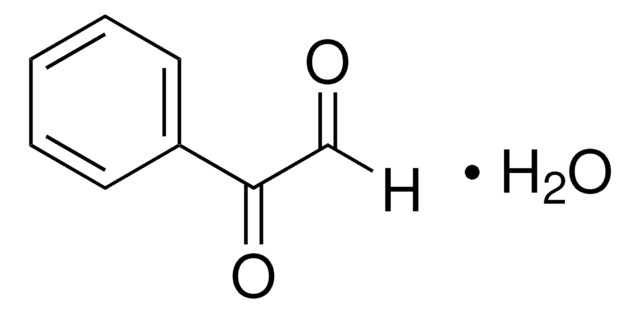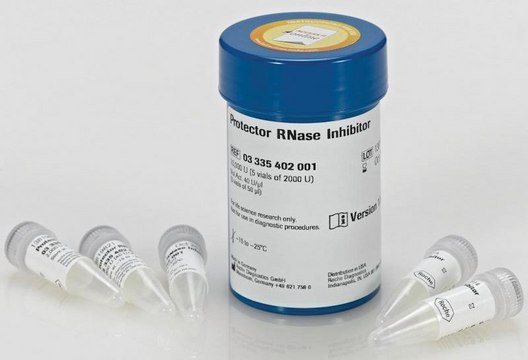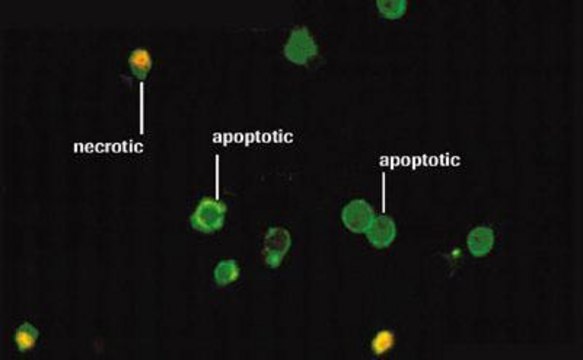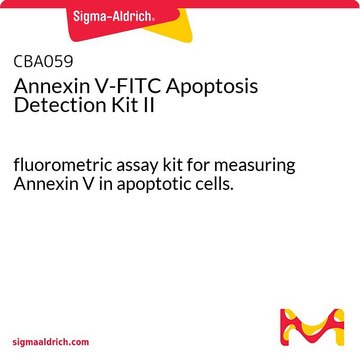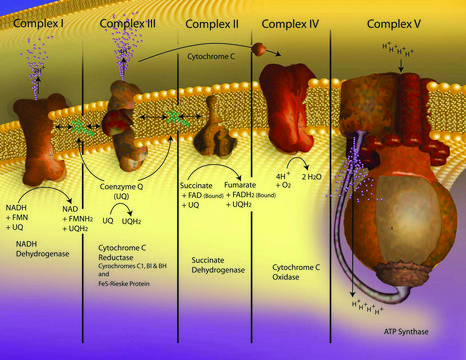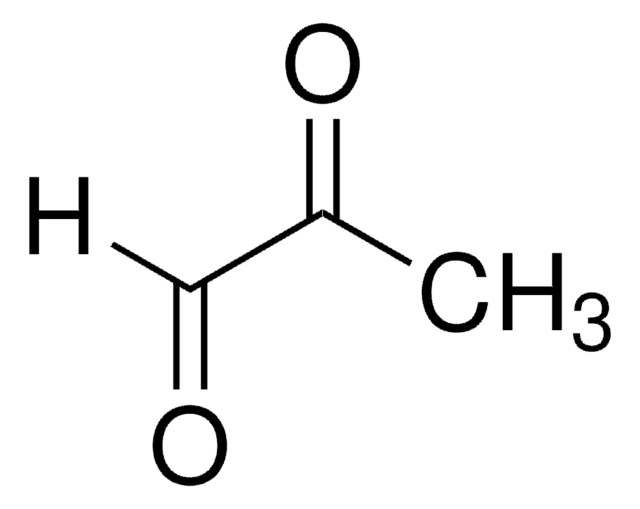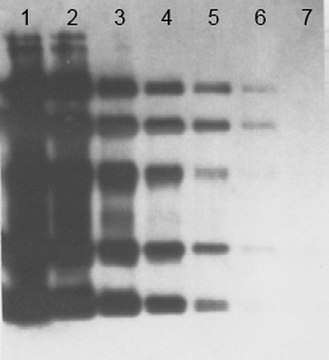ROANNV
Roche
Annexin-V-FLUOS Staining Kit
sufficient for 50 tests (11858777001), sufficient for 250 tests (11988549001), kit of 1 (3 components), suitable for cell analysis
Sign Into View Organizational & Contract Pricing
All Photos(1)
About This Item
UNSPSC Code:
12352200
Recommended Products
usage
sufficient for 250 tests (11988549001)
sufficient for 50 tests (11858777001)
packaging
kit of 1 (3 components)
manufacturer/tradename
Roche
application(s)
cell analysis
shipped in
wet ice
storage temp.
2-8°C
General description
In the early stages of apoptosis, changes occur at the cell surface. One of these plasma membrane alterations is the translocation of phosphatidylserine (PS) from the inner side of the plasma membrane to the outer layer, exposing PS at the surface of the cell. Macrophages specifically recognize PS exposed on the cell surface of lymphocytes during the development of apoptosis. The recognition and phagocytosis of apoptotic cells and bodies protects organisms from exposure to cellular compounds that lead to inflammation, which usually accompanies necrosis. Annexin V is a 35.8kDa, Ca2+ -dependent phospholipid-binding protein with a high affinity for PS, making labeled annexin an excellent detection agent.
Detection: Annexin-V-FLUOS can be directly detected in FACS analysis and immunochemistry without a secondary detection system.
Sample material: Cell lines and freshly isolated cells.
Kit with FLUOS-conjugated annexin-V and propidium iodide for the detection and quantification of apoptosis and differentiation from necrosis at the single-cell level.
Detection: Annexin-V-FLUOS can be directly detected in FACS analysis and immunochemistry without a secondary detection system.
Sample material: Cell lines and freshly isolated cells.
Kit with FLUOS-conjugated annexin-V and propidium iodide for the detection and quantification of apoptosis and differentiation from necrosis at the single-cell level.
Specificity
Annexin-V-FLUOS binds in a Ca2+-dependent manner to negatively charged phospholipid surfaces, and shows high specificity for phosphatidylserine. Therefore, it stains apoptotic and necrotic cells. Propidium iodide stains only the DNA of leaky necrotic cells and allows for a distinction between apoptotic and necrotic cells.
Application
Labeled annexin-V, with its high affinity for phosphatidylserine (PS), is a sensitive probe for PS exposed on the outer layer of apoptotic cells. Since necrotic cells also expose PS as a result of lost membrane integrity, propidium iodide is utilized as a DNA stain to distinguish necrotic cells from annexin-V-labeled cell clusters. Other secondary labeling is possible, such as membrane-surface staining with phycoerythrin- or TRITC-labeled monoclonal antibodies for further cellular characterization.
Packaging
1 kit containing 3 components
Preparation Note
Working solution: Predilute 20 μl Annexin-V-FLUOS labeling reagent in 1 ml Incubation buffer and add 20 μl Propidium iodide solution.
Note: 1 ml is enough for 10 samples.
Storage conditions (working solution): Diluted staining solution should be always prepared freshly.
Note: 1 ml is enough for 10 samples.
Storage conditions (working solution): Diluted staining solution should be always prepared freshly.
Other Notes
For life science research only. Not for use in diagnostic procedures.
Kit Components Only
Product No.
Description
- Annexin-V-FLUOS Solution ready-to-use
- Propidium iodide solution ready-to-use
- Incubation Buffer (HEPES Buffer) ready-to-use
Signal Word
Warning
Hazard Statements
Precautionary Statements
Hazard Classifications
Skin Sens. 1
Storage Class Code
12 - Non Combustible Liquids
WGK
WGK 1
Flash Point(C)
does not flash
Regulatory Information
常规特殊物品
Choose from one of the most recent versions:
Already Own This Product?
Find documentation for the products that you have recently purchased in the Document Library.
Xi Zhang et al.
Stem cells (Dayton, Ohio), 33(6), 1915-1926 (2015-04-08)
Dysfunction of the hematopoietic microenvironment is the main obstacle encountered during hematopoiesis reconstruction in patients with acute hematopoietic radiation syndrome. Bone marrow mesenchymal stem cells (BM-MSCs) play a crucial supporting role in hematopoiesis by maintaining the balance between adipogenic and
Atsushi Miyagi et al.
Nature nanotechnology, 11(9), 783-790 (2016-06-09)
Annexins are abundant cytoplasmic proteins that can bind to negatively charged phospholipids in a Ca(2+)-dependent manner, and are known to play a role in the storage of Ca(2+) and membrane healing. Little is known, however, about the dynamic processes of
Tanvi J Desai et al.
Oncotarget, 7(21), 30678-30690 (2016-04-28)
Phosphatidylserine (PS) is an anionic phospholipid maintained on the inner-leaflet of the cell membrane and is externalized in malignant cells. We previously launched a careful unbiased selection targeting biomolecules (e.g. protein, lipid or carbohydrate) distinct to cancer cells by exploiting
Marianna Holczer et al.
BioMed research international, 2015, 319589-319589 (2015-05-20)
One of the most important tasks of a living organism is to maintain its genetic integrity with respect to stress. Endoplasmic reticulum (ER) has a crucial role in sensing cellular homeostasis by controlling metabolism, proteostasis, and several signaling processes. ER
Eugene Y D Chua et al.
Nucleic acids research, 43(11), 5284-5296 (2015-04-29)
Platinum-based anticancer drugs act therapeutically by forming DNA adducts, but suffer from severe toxicity and resistance problems, which have not been overcome in spite of decades of research. And yet defined chromatin targets have generally not been considered in the
Articles
Cellular apoptosis assays to detect programmed cell death using Annexin V, Caspase and TUNEL DNA fragmentation assays.
Our team of scientists has experience in all areas of research including Life Science, Material Science, Chemical Synthesis, Chromatography, Analytical and many others.
Contact Technical Service
